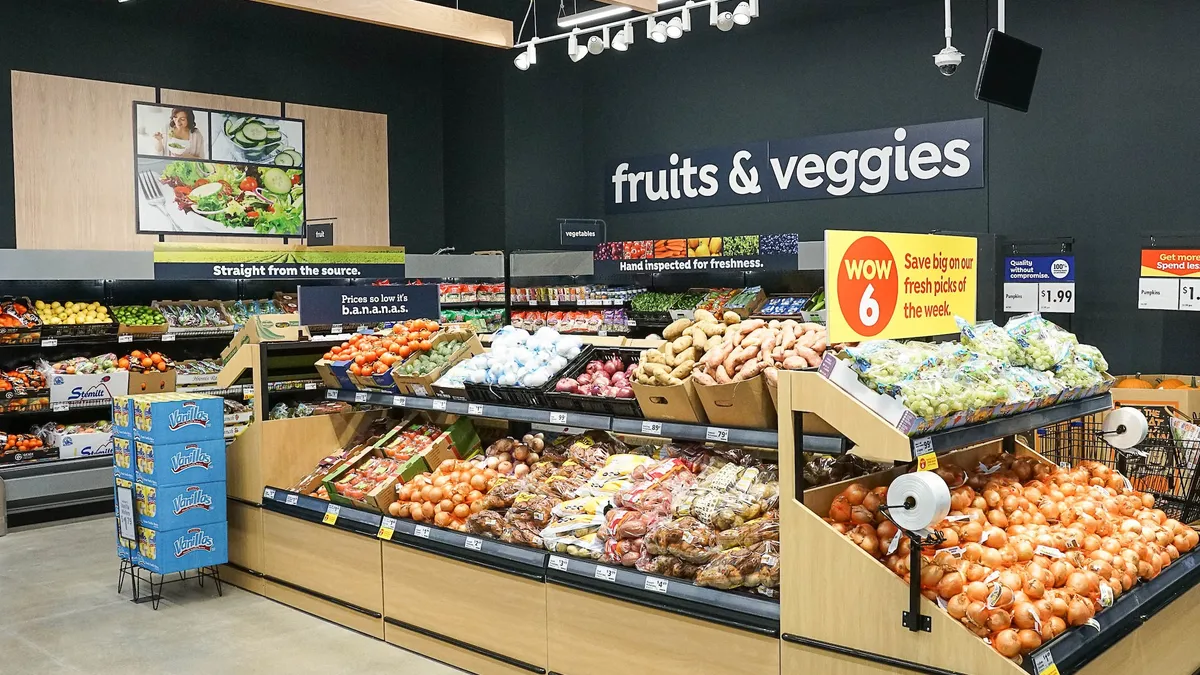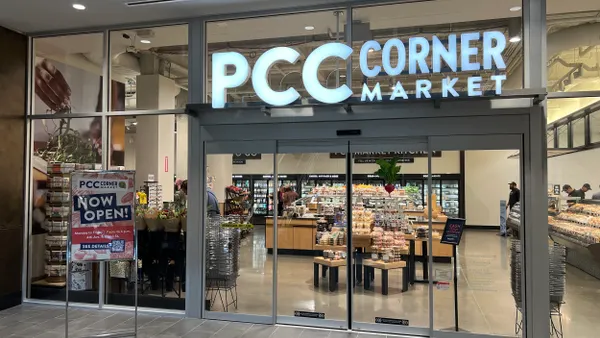Dive Brief:
- Amid high inflation, grocers’ produce departments saw sales increase 4.8% in 2022 compared with the prior year, to $74.5 billion, while the number of pounds sold declined 4.2%, according to the Food Industry Association’s new Power of Produce report. Compared to 2019, produce sales and volume sales increased 19.2% and 3.4%, respectively.
- Even as consumers dealt with high food prices last year, they still showed a hunger for fruit and vegetable options that cut down some of the work in their kitchens. FMI found that more shoppers bought pre-cut and pre-washed options, as well as packaged salads — items that typically cost more per pound compared to their counterparts that require more prep work.
- Among the key takeaways from FMI’s report are that value matters to consumers in the produce aisle and that grocers have opportunities to boost awareness around value.
Dive Insight:
FMI attributed fresh produce’s performance largely to the impact of inflation, which boosted dollar sales but pressured units and volume. All three metrics, though, are higher than pre-pandemic levels, signaling consumer demand for fresh produce is strong.
While consumers were willing to spend more on some produce items that save them time and energy to prepare, FMI’s report noted that they have cut back spending in other ways, with 84% turning to money-saving measures like seeking sales, buying less and shifting between stores.
“The shift we’re noticing is that shoppers turned to more affordable conventional fresh fruits and vegetables and canned and frozen vegetables rather than buying pricier organic items,’’ Rick Stein, vice president for fresh foods at FMI, said in a press release about the report.
An interesting finding from the report is that organic sales have slid after several years of rapid growth. In 2022, conventional fruit and vegetable sales outpaced organic, which increased in dollars but declined in pound sales. Inflation could very well be the cause for some of this: A quarter of surveyed shoppers said they are buying less expensive fresh produce due to higher costs.
One-third of people in the U.S. consume fresh produce daily while 42% do so less than three days a week, and shoppers often overlook meal occasions, such as breakfast, snacks and dessert, for the category, the report noted. Consumers also need help better understanding portion sizes and nutrition, FMI said.
While supermarkets are the main channel for fresh produce purchases, convenience stores, drug stores and other nonfood-focused formats are encroaching on produce dollars, FMI said.
Even as they face growing competition from different retailers, grocers have opportunities to boost their produce sales and keep their competitive advantage — especially by encouraging shoppers to turn to fruits and vegetables for more dayparts, the report notes.
“Smaller packages with mix-and-match discounts can be a way to drive trial and overcome purchase barriers. Optimized production planning may address shelf life and freshness concerns. In urban stores with a younger audience, more variety and organic assortment are key to enhanced engagement,” the report noted.
Other tips for grocers from the FMI report include leveraging store-bought produce to complement restaurant meals, spotlighting local items to incentivize impulse purchases and offering personalized promotions. FMI also recommends that grocers provide to consumers portion guidance and ideas with consumers for how to use produce with different meal occasions. Cross-departmental package deals can help highlight affordability, the report noted.
Among the 32% of surveyed consumers seeking greater assortment, 80% want a larger selection of eady-to-eat or cook pre-cut and washed fruits and vegetables, FMI noted.
The report, which was prepared by 210 Analytics, is based on a survey of 1,491 grocery shoppers between Nov. 16 and Nov. 23, 2022, along with department point-of-sale and consumer engagement data from IRI.












